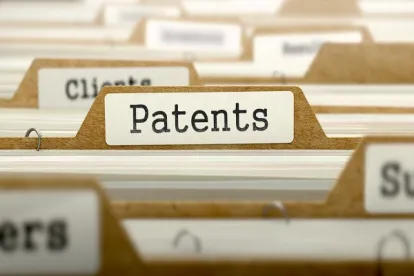The US Court of Appeals for the Federal Circuit found that a district court abused its discretion in granting a preliminary injunction enjoining a patent holder from making claims of patent infringement without finding that those infringement claims were made in bad faith. The Federal Circuit reversed, vacated and remanded the district court’s decision. Myco Indus., Inc. v. BlephEx, LLC, Case No. 2019-2374 (Fed. Cir. Apr. 3, 2020) (O’Malley, J.).
Myco Industries and BlephEx both commercialized products used to treat an ocular disorder. During a 2019 industry trade show, BlephEx’s patent inventor confronted his former business partner, now Myco’s chairman, accusing Myco of infringing on BlephEx’s patents and allegedly threatening patent litigation against Myco’s potential customers. Myco sought a declaratory judgment that it had not infringed on BlephEx’s patent and that the claims of BlephEx’s patent were invalid under 35 USC §§102, 103 and/or 112, and sought injunctive and monetary relief under state and federal unfair competition laws. Myco also moved for a preliminary injunction to bar BlephEx from making false allegations that Myco’s activities infringed on BlephEx’s patent and from threatening litigation against Myco’s customers. The district court granted Myco’s motion for a preliminary injunction, and BlephEx appealed.
The Federal Circuit reviewed the district court’s determination of whether to grant a preliminary injunction for an abuse of discretion, and reviewed de novo the district court’s assessment of whether Myco was likely to succeed on the merits of its claim. Courts balance four factors when assessing whether to grant a preliminary injunction:
-
Whether the movant has a strong likelihood of success on the merits
-
Whether the movant would suffer irreparable injury absent an injunction
-
Whether the issuance of an injunction would substantially harm others
-
Whether the public interest is served.
Patent laws, however, permit a patent holder to inform a potential infringer of its patent rights so that the potential infringer can assess whether to seek a license or risk liability. Federal patent law also requires a showing of bad faith before a patent holder may be enjoined from communicating its patent rights. Bad faith requires that the claims at issue be “objectively baseless,” meaning no reasonable litigant could reasonably expect success on the merits.
The Federal Circuit held that the district court abused its discretion by granting Myco’s preliminary injunction without first finding that BlephEx’s claims of patent infringement were made in bad faith. The Federal Circuit noted that the district court expressly declined to find that any of BlephEx’s statements were either false or misleading.
The Federal Circuit rejected Myco’s argument that it sought a narrow injunction to prevent BlephEx from making objectively baseless and bad faith threats of litigation against Myco’s potential medical practitioner customers, whom Myco argued were statutorily immune from liability. In rejecting this argument, the Court reasoned that Myco sought to prevent BlephEx from speaking about any alleged infringement by Myco; that while statutory immunity may prevent a patent holder from seeking a remedy against a medical practitioner, it does not render the practitioners noninfringers; and that there was no evidence that BlephEx threated litigation against Myco’s potential customers. Accordingly, an inference of bad faith was inappropriate.
After reversing the district court’s grant of preliminary injunction, the Federal Circuit vacated the district court’s finding that Myco had shown a strong likelihood of success on the merits—one of the factors considered in determining whether to grant a preliminary injunction. With respect to patent infringement claims, this factor requires a determination that the alleged infringer likely does not directly infringe on the patent at issue, which in turn requires claim construction and a conclusion that use of the product does not read on those claims. The Court found that the district court’s claim construction improperly limited the scope of the patent’s claims and violated the doctrine of claim differentiation by reading a dependent claim’s limitation into an independent claim.
Finally, the Federal Circuit found that the district court conflated the invention claimed in the patent at issue with the commercial product that resulted from that patent. Claim construction requires that a court assess the limitations of a patent’s claims rather than the features of the commercial embodiment of the invention.
Given these errors of law, the Federal Circuit vacated the finding that Myco was likely to succeed on the merits of its noninfringement claims and vacated the court’s grant of a preliminary injunction as to BlephEx’s generalized allegations of patent infringement.




 />i
/>i

